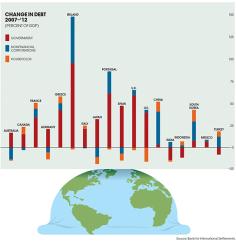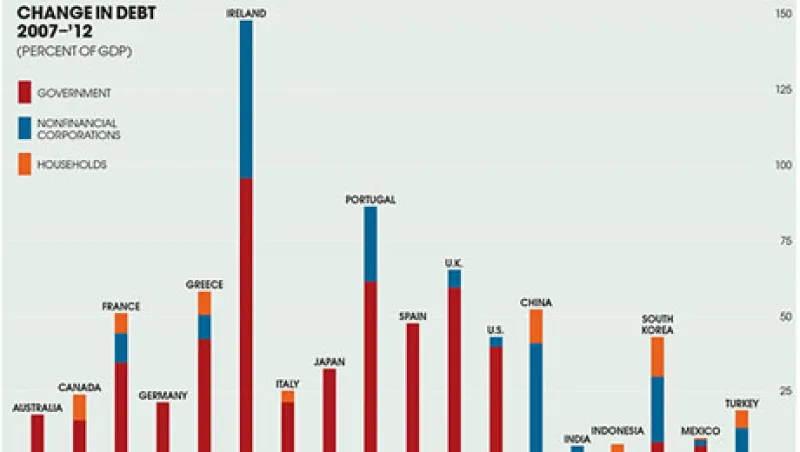
|
Ireland and Portugal stand out, not surprisingly, but the debt story isn't just a Western one. China's debt rose more than the U.S.'s between 2007 and 2012; no wonder many analysts fret about the legacy of the country's 2009 stimulus program. Private nonfinancial sector debt is approaching 150 percent of GDP in the U.S. and emerging Asia — the former by falling, the latter by rising.
For the 18 countries included in the graphic above, debt has increased by $33 trillion, or roughly 20 percent of GDP, over the past five years. U.S. households have managed to reduce debt, but by less than the average 40-percentage-point drop seen after previous financial crises, according to a Bank for International Settlements study.
Still, debt doesn't tell the whole story. India, Indonesia and Turkey compare favorably on debt, but they have been hit hard by the recent emerging-markets sell-off because of big current-account deficits and concerns about broad economic policy.






